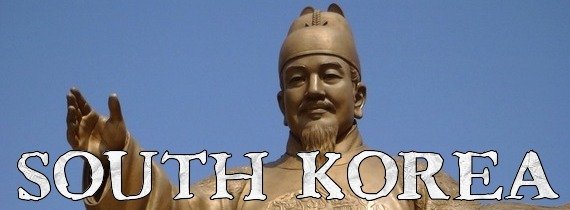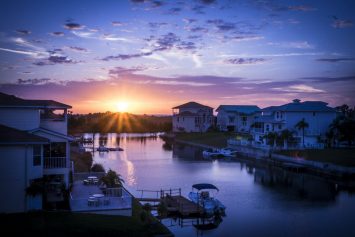From the semi nomadic people of the Mongolian Steppes to the sophistication of Tokyo, from secretive North Korea to bustling Hong Kong, and that economic powerhouse China in all her natural splendour, the countries of Eastern Asia represent a marvellous diversity of culture, religion, lifestyle and politics.

China is a vast country spanning areas from sub-tropical beaches to sub-Arctic ice fields. Japan on the other hand is a small and crowded country that still manages to include colorful gardens and parks in its urban sprawl.
Flanked by stone lions and gilded dragons, these countries all boast colorful and often opulent temples and palaces. Their cultural history goes back millennia and is richly reflected in the distinctive architecture, art and gardens.
Quick Navigation
ToggleCountries in Eastern Asia
China
Once hidden from the world by the veil of Communism, China has now opened up, allowing visitors to enjoy its ancient oriental mysteries. The oldest continuous civilization in the world, China boasts villages that time has forgotten and contemporary cities sporting modern skyscrapers and leading edge commercial centers.

Flanked by stone lions and gilded dragons, ancient temples have been built in valleys and on mountains in almost every corner of China. The palaces and imperial gardens celebrate the harmonious balance between nature and architecture. Waterways abound throughout the countryside and into some towns and villages where boats and canoes are used for transport.
China is an enormous country with diverse natural resources spanning the tropical South to the subarctic north. Parts of the country are steeped in breathtaking, otherworldly, natural beauty, where unique and majestic cone shaped mountains create a fantasy of peaks and forests amongst misted skies. Rice paddies, forests, lakes, a desert, mountains, oceans and rivers, China has it all.
Hong Kong
Hong Kong is probably one of the most unique and impressive cities in the world with towering skyscrapers, great beaches, some of the best shopping and even a fishing village or two. The varied culture and cuisine of Hong Kong reflects its history.

Sail out on the Star Ferry, which has been doing trips out of Hong Kong harbor since the 1880’s. See Hong Kong from a different viewpoint and enjoy the freedom from the crowds. Take a tram up to the Peak to view the city from the beautiful parks above, or hike up picturesque Mount Collinson. Over seventy percent Hong Kong consists of mountains and beautiful parks.
See Pandas and endangered Chinese giant salamanders at the Ocean Park, an exciting theme park that includes animal enclosures and great aquariums.
The daily Symphony of Lights is, according to the Guinness Book of Records, the largest permanent light and sound performance in the world.
Japan
Japan has everything. It is a land of ancient shrines and temples, monasteries and castles, mountains, waterfalls, gardens and parks, bridges and forests, lovely sandy beaches, and cherry blossoms in the spring.

On the exterior Japan appears to be very modern but beneath it all is a country swathed in ancient culture and tradition. Kyoto, Japan’s ancient capital has over one thousand temples and shrines. It also boasts Zen Gardens and tranquil public parks.
Monasteries offer overnight accommodation so that visitors can experience monastic life. Japan’s old cities offer an experience quite different to those of Europe. Samurai houses and Geisha tea houses are unique to Japan.
Over two thirds of the country is mountainous and the mountains are full of thermal springs. Hiking and skiing is a popular pastime. In the south sub tropical beaches are great for diving, swimming or sailing.
North Korea
Traveling to North Kore? Here’s a complete guide. Resources and all you need to know before and after visiting the DPRK.

South Korea
With five thousand years of history, South Korea is a modern economy backed by ancient tradition. The country is full of centuries old palaces, temples and fortresses bearing the unique and graceful roof form that is so oriental.

Many of the treasured historical buildings are set in some of the most modern cities in Asia. In Seoul the Imperial Palace built in 1395, and destroyed by the Japanese, has been lovingly restored to its former glory and contains a museum full of national treasures.
In some areas of the country the grassy burial mounds of ancient kings have changed the landscape, in another a temple has been carved out of a rock. A two thousand year old fortress overlooks the surrounding landscape from Mount Namham.
The countryside is full of traditional villages where people live much as they have for centuries and with 5500 kilometers of wetland, home to more than one thousand species of animals, there is also plenty for nature lovers to enjoy.
Mongolia
Mongolia, in East Asia is a land where time has stood still. A country where nomads roam the desert on horseback, living in traditional round tents, where you can happen upon a Shaman as he contacts the spirits of the dead.

This is a country with wide-open spaces that are practically isolated and wild, where vast expanses of land contain only grazing herds. The country boasts the second biggest fresh water lake in the world and the Gobi Desert, home to the two-humped camel.
Colorfully painted Buddhist temples and the stone remains of Buddhist monasteries attest to the faith of the people. The countryside is strewn with monuments and tombs to the Turks who once fought in the region.
Visitors to Mongolia can stay in traditional tents equipped with a central fire. Then join the nomads in the surrounding grasslands on horseback or visit the spot where the first unbroken dinosaur eggs were found, and where dinosaur excavations are still underway.
Macau
For four hundred and sixty-six years Macau, on China’s south coast, was a Portuguese colony. In 1999 it became a Chinese autonomous region.

Known as the Vegas of China, Macau has the world’s largest casino. The Venetian offers state of the art entertainment and retail outlets.
One of the most recognizable landmarks in Macau is the ruin of Saint Paul’s Church built in the seventeenth century. It burnt down in 1835 and all that remains of the building is the intricately carved stone façade.
Macau is a melting pot of Portuguese and Chinese cultures. The city has many picturesque Portuguese churches, and a typical Portuguese fort stands on top of a hill overlooking the city. A four-hundred-year-old Buddhist temple, stone lions, gold statues of Buddha and a fifteenth-century temple to A-Ma, goddess of seafarers, mingle with the colonial architecture.
Taiwan
Taiwan is a land where ancient traditions and modern life are constant companions. The capital, Taipei, one of the fastest growing cities on earth, boasts modern skyscrapers, fast and efficient public transport systems and contemporary retailers.

Yet side-by-side stand beautiful and opulent Taoist, Buddhist and Confusion temples, each containing magnificent works of art, and gilded statues. The biggest collection of Chinese art on earth can be found at the National Palace Museum in the city.
Taiwan has also been blessed with considerable natural beauty. The Toroko Gorge is one of the most impressive natural wonders of Asia.
Amongst the tropical forests, marbled arches rise into the sky. The movement of tectonic plates and the river, which over time has driven itself six hundred meters into the gorge, have caused these impressive cliffs and columns.
The island coastline has some lovely beaches with extraordinary rock and shoreline landscapes that host colorful fishing villages and bustling fish markets.
Tibet
Sharing the Himalayas with Nepal, Tibet is situated on the highest plateau on earth, which is why it is known as the “Roof of the World”. Home to a unique society whose faith, art and architecture make it stand out, Tibet is full of monasteries, most of which are occupied by monks.

The architecture in Tibet appears to hale from times past. Many homes are built of stone and surround large inner courtyards. In this country of sparkling lakes and snow-capped mountains, people live much as they have done for centuries.
Many Buddhist monasteries serve as places of pilgrimage. They are decorated with colorful prayer flags, gilt statues and artworks that date back to prehistory. The temples are filled with colorful sacred paintings.
In recent years Chinese cultural influence has become more apparent. The Chinese have made possible the construction of large modern buildings, and evening markets have become a way of life.


